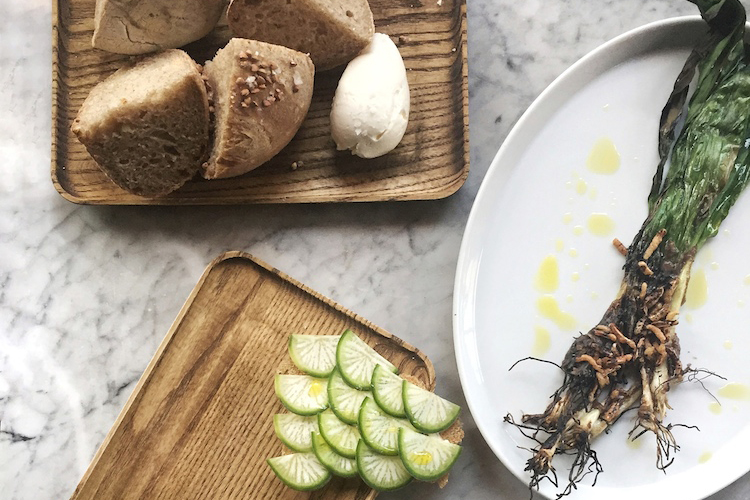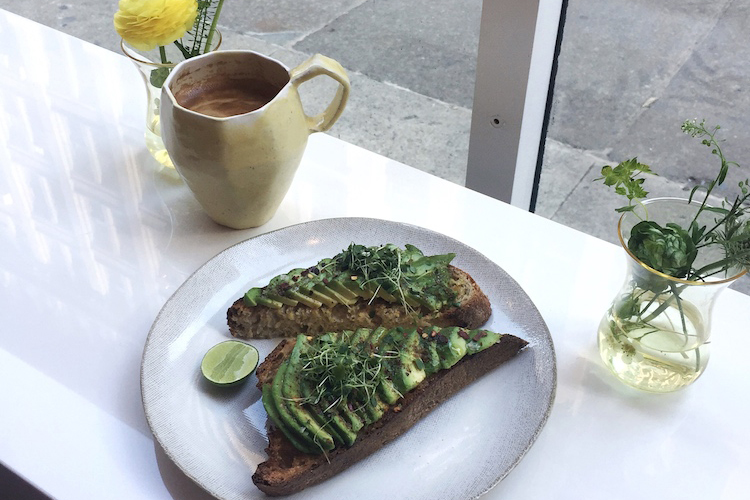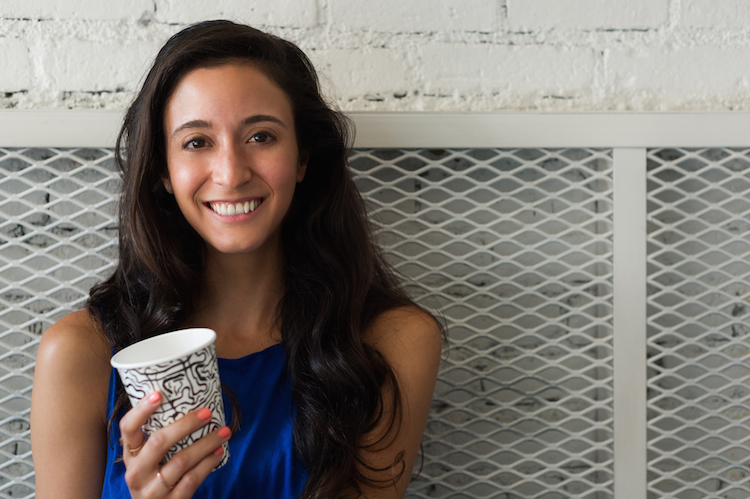Marisel Salazar studied abroad in Madrid, Spain, during her time as an undergraduate at Cornell University. It is here where she experience her culinary epiphany.
Since then, there has been no looking back for Marisel. She is now a food and lifestyle writer for various publications including PureWow, Tasting Table, nycgo.com and Martha Stewart Living. She also runs @breadbutternyc, her food & lifestyle Instagram with 19.8k+ followers, where she integrates food, fitness, and travel.
You went to Cornell University, where you majored in communications. How did you get started as a food blogger?
Originally, I thought I was going to become a nutritionist despite my communications degree. Food is my first love, and nutrition is very important to me. But, I had a lot of student debt and landed a job at a research management consulting company in DC to chip away at the loans instead of taking on more debt for a dietetics degree. From there, I worked as a web analyst for a healthcare treatment advisory firm in Georgetown. But by night, I worked as an editorial assistant for a clean-eating lifestyle website and began contributing to other brand’s food blogs. I knew if I ever wanted to make food writing my “bread and butter,” I needed to move to New York City to be in the thick of things and meet people in the industry. So I did. I continued working as a web analyst for a DC-based company remotely, while doubling as an editorial assistant and picking up more (unpaid) freelance writing gigs (and simultaneously working on my food photography, and personal social media). I grew my body of editorial work and the unpaid eventually turned into paid, and I was eventually able to transition into freelancing as a food writer, social media manager, and photographer.

Nickel & Diner | Marisel Salazar
At Cornell, you studied abroad in Madrid, Spain. How did your study abroad experience help you launch a successful career?
Madrid is where I had my culinary epiphany. It was a defining moment in my life where I knew I wanted to dedicate my day-to-day covering food.
I was at the famous Mercado de San Miguel and bit into an anchovy stuffed olive. Fireworks went off in my mouth – I’d never tasted anything so delicious and impactful. My daily interactions with food while studying in Spain also greatly influenced me – the Spanish ate with gusto, and so many social interactions revolved around food. I loved the attitude and wanted to live that relationship with food in the United States.

Sunday In Brooklyn Food | Marisel Salazar
You were recently featured as one of Refinery29’s Top NYC Food Instagrams to follow and Zagat’s Top 100 Foodies to Follow in the U.S. What recommendations do you have for young food bloggers to get featured in such outlets? Do you pitch the reporter directly?
Post consistent, quality content. Interact with the social community on whatever your given platform is. Develop a body of social media content the same way you would on a website, blog, or for your resume. Meet up with other food bloggers for coffee or meals and develop meaningful relationships with one another. Your social media profile and presence are your pitches – the more you build it, the more you will get noticed by press (which is how Refinery29 and Zagat mentions came my way!). But it doesn’t happen overnight – it takes a lot of work, planning, and foresight. It is not as easy as breezing in, snapping a picture, and posting online. There is a lot of styling, brainstorming, editing, developing relationships, and organizing editorial calendars. It is almost like you are running your own mini, daily magazine or news site. It is so much work than it appears to be, but don’t get frustrated! It is a part of the process, and the sooner we dispel that building a social media presence is easy, young bloggers can start setting realistic expectations for themselves. It is a job and you must treat it as one.

Elements Princeton | Marisel Salazar
You also write for publications, such as Martha Stewart Living. What recommendations do you have for aspiring food writers for pitching these kinds of magazines?
I work primarily as a food writer and creative consultant offering branding, trend forecasting, partnerships and photography services. Take a look at the website you would like to pitch and make sure what you are offering fits their existing content and hasn’t already been covered before. Craft a concise pitch with a succinct outline of what you want to cover. Editors are really busy, so the easier you make it for them to understand your pitch, the better. And again – have realistic expectations about your rate. If you are a young writer building a portfolio, chances are “glossier” publications might not get back to you until you have some published pieces from smaller publications under your belt. And even then, you may not get paid for your first couple of pieces if they accept your pitch or you may get paid an “introductory” rate. It is like any job – you need to demonstrate experience and interest before “moving up the ladder.” Start with smaller publications and blogs, and then work your way up.
Some of your work involves working with brands, such as Arlo Hotel blog, GrubHub, Travel Portland, Noosa Yogurt, PANATEA, Plan Do See America, New Amsterdam Vodka, David Burke Restaurant Group + more. What does this work involve? How much can aspiring food bloggers expect to get paid from campaigns with brands?
Some of these are editorial sites that I contribute to or social media accounts I’ve run, while others are social media collaborations and partnerships. Just like with food writing, expect not to get paid if your audience is on the smaller side – it will most likely look like posts in exchange for product. The more you grow, then you can start commanding rates for social media posts but that is subject to a variety of factors including audience size, engagement rate, quality of your creative, etc. Again, you need to demonstrate a body of work and experience on social media, just like applying for any job that requires a resume! Think of it as your social resume.

Abcv | Marisel Salazar
What about the ethical questions of recommending a brand that one works with, but might not even like? How do you make sure to disclose your partnerships to your readers?
In light of new FCC laws, you must disclose any paid partnerships or campaigns using designated hashtags, while also stating it clearly to your followers on social media. I always champion promoting brands you like and use “in real life.” In any discussions with a brand, I always ask to try the product first before entertaining the idea of a post – I have to make sure I like it before I promote it and accept paid partnerships. Secondly, I like to build long term relationships with a brand rather than one-off posts – that way both myself and my followers will see we have a genuine relationship which makes for a great influencer-brand relationship rather than being a one-hit wonder.
Marisel comes to New York City by way of Panama, Hawaii, Madrid, and Japan. Learn more about her on mariselsalazar.com. For unfiltered thoughts, follow her on Twitter @mariselsalazar.
Digital Marketing & Social Media Internship Seminar in Madrid, Spain

